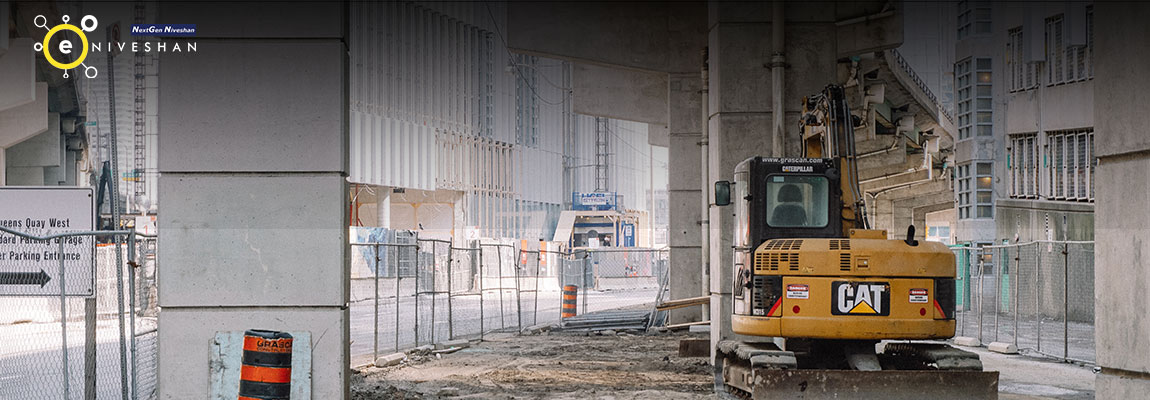Modern Day’s Infrastructure & Integration – Mr. Virendra Bora

Everything, I sincerely repeat Everything, is transforming in a transformational manner as never before. Change is inevitable and constant, more so these days and the only option left with anyone & everyone is to keep pace with the change. Be part of change than be fence-sitter. This is one of the ways to stay relevant in all facets of life, all-over all-the-times.
Most of these transformational transformations are technology-led and disruptive (on a positive note) in nature. System Integration (SI), traditionally always considered among most complex-high value-&-high risk, projects are undergoing 360-degree change with all-together new dimensions among ICT (Information Technology, Communication, and Telecom) projects & initiatives.
To set the context, it is an effort to draw attention to some of the Policy and Execution level administrative reforms to make New Norms closer to reality. Such changes shall create an all-round effect & impact in broadening the ecosystem formally, making ecosystem players more integral & inclusive, enhanced accountability & transparency, and a direct reflection on overall Growth.
Traditionally, SI projects were primarily technology-driven; too many technology components under infrastructure1, focus on non-functional2 requirements were among the key considerations from project conceptualization through execution. There were some components of the application, though the size of the application used to be relatively smaller in nature. Though the success and/or failure of the project was mostly determined by Implementation & roll-out of Applications. Fundamentally, these projects were ICT (Information Technology, Communication, and Telecom) centric, mostly Capital-intensive, SLA-based commitments with attached different commercial models.
What has changed over the years, more so during modern days? What are the factors attributing to this change? Why such a change? What does it mean to all-around stakeholders? Why it is so important & critical to understand this change? Policy level changes and reforms are essential, … It is an effort to bring all concerned stakeholders on the same page.
Great opportunity to look at this change and its impact.
Fundamentally, the project scope and definitions have changed in line with new business scenarios, requirements, and expectations.
It may be interesting to see the change around some of the initiatives like Smart City, Safe City, New large & complex Infrastructure projects like building New Corridors/ Townships/ Convention Centers/ Business Centers/ …, Passport, Analytics @ CBDT, Surveillance, Cyber Security (dark-net, …), FIU (Domain-specific), …; Integration & Inter-interoperability are among key requirements, Total Outsourcing to add value to the business through optimal exploitation of technologies, self-sustained and revenue-generating projects, …
1 infrastructure requirements like servers, storage, network, fiber-cabling, integrations, connectivity, communication, backups, disaster recovery, business continuity, …
2 Non-functional requirements like High Availability, Performance, Redundancy, Scalability, Security, Manageability, …
Emerging Technologies like Cloud have unfolded and decoded good old day’s size, value, and complexity as solved puzzles. In recent times during COVID’19 to name one example, when the Government of India launched an app called Arogya for Pan-India to cover millions and millions of people, the teams only focused on development and rollout of the application. The entire development & deployment platform was done on the Cloud. To extend further, teams had all the platform options available over Cloud without any restrictions and limitations. In the process, two things happened (a) the project conceptualization, development, implementation, rollout, and maintenance became seamless as the focus was limited to app (b) the cost and procurement life-cycle was significantly brought down, as lots of time go in sizing, creating & processing RFP (Request for Proposal), evaluation, decision, procurement, installation, commissioning, …
ICT has become assumed/ given requirement as another interesting development in modern day’s new or revamp infrastructure & other projects. Like Airport modernization, ICT has become an assumed part of overall Airport projects including ICT for Airport Operations Management, Security, Surveillance, … Likewise, the development of a new corridor or township assumes all-round ICT requirements as core to the project. Typically these projects include ICT and non-ICT for ICT. So, the new trend shows that MSI (Master System Integrator) engages with typical ICT companies for select work of ICT. Likewise, the Consultants for such projects are very different than traditional ICT Consultants; and MSI(s) appropriately engages ICT Consultants.
Smart City, Industrial Corridor, Large Infrastructure projects like the redevelopment of Pragati Maidan, … have clearly shown a very different model. Among all these projects, most of the active & participating players are with the background of doing Construction & Infrastructure development project. EPC players like Shapoorji Pallonji, L&T Construction, Tata Projects, … are the Lead Bidders.
These MSI/ EPC players have shown very interesting trends and concrete behavior, i.e. they have NOT necessarily gone with the Group ICT company. Rather, most cases NOT. They have evaluated Industry ICT players and decided on ICT partners on the merits of SI aligned with project requirements.
Business models are changing like MSI/ SI earns a major part of revenue through the value creation during the execution of the project. This has brought another dimension, i.e. the SME (Subject Matter Experts) remains integral to the project throughout the project lifecycle, as MSI/ Si has to continuously analyze and interpret data to come up with new use cases basis data patterns and data behavior.
In sum, ICT is assumed as an integral part of projects. No more hype, no more a matter of specialization, … it is all about collaboration under a larger umbrella.
In such a changing and ever-transforming scenario, making an effort to draw Government (Policy and Decision-makers) attention on some of the aspects:
- Make absolute provision to bring some of the key stakeholders in the bidding process. Some of these industry players may be brought under different categories like Innovation, Niche Solution Providers, SME (Subject Matter Experts). The evaluation process shall ensure sufficient focus in assessing these partner’s roles, ability, capability, … as they may be critical in project success.
- Appropriate attention shall be paid to outsourcing and sub-contracting during execution, esp. beyond the RFP response teaming partners.
- Review and revisit some of the commercial & legal clauses like “Jointly and Severally liable”, they need to be implemented in the right spirit to protect the interest of all relevant stakeholders appropriately than restricting in nature.
- And likewise, many other good old aged terms and conditions.
This is an effort to draw the attention of the right people in the right earnest. A roundtable may be the next logical step among the right stakeholders to build the New Norms for New India. Ideally, this shall be taken up as at a policy level, build implementable and actionable road-map, and roll-out to make India more inclusive. This can help Startups and Niche players to become an integrated part of formal Economy with new opportunities and venues.
https://community.nasscom.in/communities/policy-advocacy/modern-days-infrastructure-integration.html
Virendra Bora, Senior Vice President – Sales
Niveshan Technologies India Private Limited
